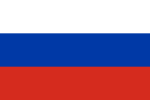
Omsk is the administrative center and largest city of Omsk Oblast, Russia. It is situated in southwestern Siberia and has a population of over 1.1 million. Omsk is the third largest city in Siberia after Novosibirsk and Krasnoyarsk, and the twelfth-largest city in Russia. It is an important transport node, serving as a train station for the Trans-Siberian Railway and as a staging post for the Irtysh River.

The Czechoslovak Legion were volunteer armed forces comprised predominantly of Czechs and Slovaks fighting on the side of the Entente powers during World War I and the White Army during the Russian Civil War until November 1919. Their goal was to win the support of the Allied Powers for the independence of Lands of the Bohemian Crown from the Austrian Empire and of Slovak territories from the Kingdom of Hungary, which were then part of the Austro-Hungarian Empire. With the help of émigré intellectuals and politicians such as the Czech Tomáš Garrigue Masaryk and the Slovak Milan Rastislav Štefánik, they grew into a force over 100,000 strong.
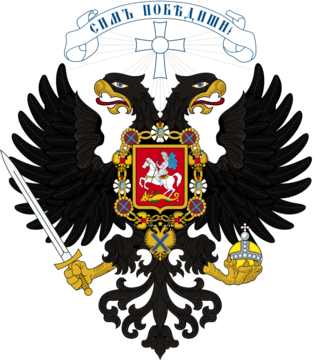
The White Army or White Guard, also referred to as the Whites or White Guardsmen, was a common collective name for the armed formations of the White movement and anti-Bolshevik governments during the Russian Civil War. They fought against the Red Army of Soviet Russia.

The Great Siberian Ice March was the name given to the 2000-kilometer winter retreat of Admiral Kolchak's Siberian Army from Omsk to Chita, in the course of the Russian Civil War between 14 November 1919 and March 1920.

The Provisional All-Russian Government (PA-RG), informally known as The Directory, The Ufa Directory, or The Omsk Directory, was a short-lived government during the Russian Civil War, formed on 23 September 1918 at the State Conference in Ufa as a result of a forced and extremely unstable compromise of various anti-Communist forces in eastern Russia. It was dissolved two months later after the coup, which had brought Admiral Alexander Kolchak to power in Communist-free areas of eastern Russia.
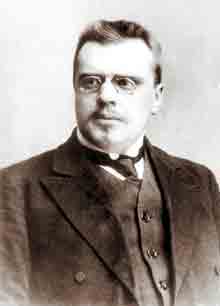
Viktor Nikolayevich Pepelyayev was a Russian politician, a supporter of Admiral Alexander Kolchak, and the Chairman of the Council of Ministers of the State of Russia.

Anatoly Nikolayevich Pepelyayev was a White Russian general who led the Siberian armies of Admiral Kolchak during the Russian Civil War. His elder brother Viktor Pepelyayev served as Prime Minister in Kolchak's government.

The Siberian Army was an anti-Bolshevik army during the Russian Civil War, which fought from June 1918 – July 1919 in Siberia – Ural Region.

The Provisional Siberian Government was a short-lived government in Siberia created by the White movement in 1918.
The Perm Operation, sometimes called the Perm Catastrophe, was a military operation on the Eastern Theater of the Russian Civil War.
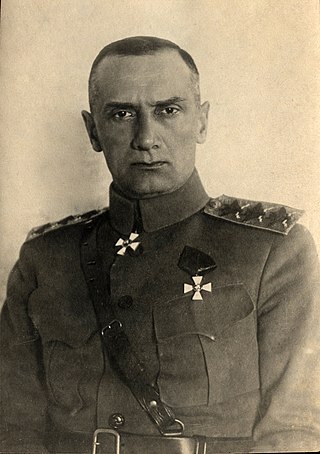
Alexander Vasilyevich Kolchak was a Russian admiral, military leader and polar explorer who held the title of Supreme Ruler of Russia from 1918 to 1920 during the Russian Civil War, though his actual control over Russian territory was limited. Previously, he served in the Imperial Russian Navy and fought in the Russo-Japanese War and World War I.
The 5th Pri-Amur Corps was a formation of the Siberian Army, part of the anti-Bolshevik White movement during the Russian Civil War. It primarily operated in the Transbaikal region and was headquartered in the city of Chita. The 5th Corps was formed from the Transbaikal Cossacks and various other volunteer forces fighting under Ataman (chief) Grigory Semyonov, as part of his Special Manchurian Unit.

Leonid Aleksandrovich Ustrugov was a Russian railway engineer who served as the Minister of Railways in the White government of Admiral Alexander Kolchak during the Russian Civil War from 1918 to 1920. He later became a victim of Stalin's Great Purge.
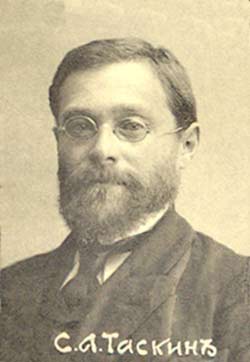
Sergey Afanasyevich Taskin was a Russian political figure of the first quarter of the 20th century, a constitutional democrat. He was a leading member of the White movement.

The Russian State was a White Army anti-Bolshevik state proclaimed by the Act of the Ufa State Conference of September 23, 1918, “On the formation of the all-Russian supreme power” in the name of “restoring state unity and independence of Russia” affected by the revolutionary events of 1917, the October Revolution and the signing of the treaty of Brest-Litovsk with Germany.

The Supreme Ruler of Russia, also referred to as the Supreme Leader of Russia, was the head of state and supreme commander-in-chief of the Russian State, an anti-Bolshevik government established by the White Movement during the Russian Civil War. For nearly two years from November 1918 until April 1920, the armies of the White Movement were nominally united under the administration of the Russian State, during which the Russian State claimed to be the sole legal government of Russia. The office's sole holder for most of its existence, and the only one to officially adopt the titles and functions of the Supreme Ruler, was Admiral Alexander Kolchak, who was elected to the position by the All-Russian Council of Ministers following the November 18 coup which overthrew the Directory.
The State Conference in Ufa which took place on September 8–23, 1918, in the city of Ufa in southern Russia was the most representative forum of anti-Bolshevik governments, political parties, Cossack troops, and local governments of eastern Russia.
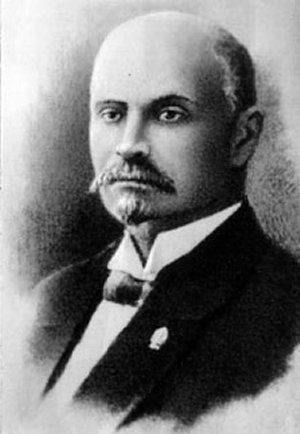
Pyotr Vasilievich Vologodsky was a Russian statesman, public figure, and mason. He was the first chairman of the Council of Ministers of the Russian state and the second and last chairman of the Provisional Siberian government.

Sergei Nikolaevich Rozanov was a lieutenant general, a leader of the White movement.

The Kolchak Coup or Omsk Coup refers to the events of 18 November, 1918, when members associated the left wing of the Directory were arrested by members of the White Army in Omsk and the subsequent decision of the All-Russian Council of Ministers to transfer sole supreme power to the Minister of Military and Naval Affairs Alexander Kolchak.

